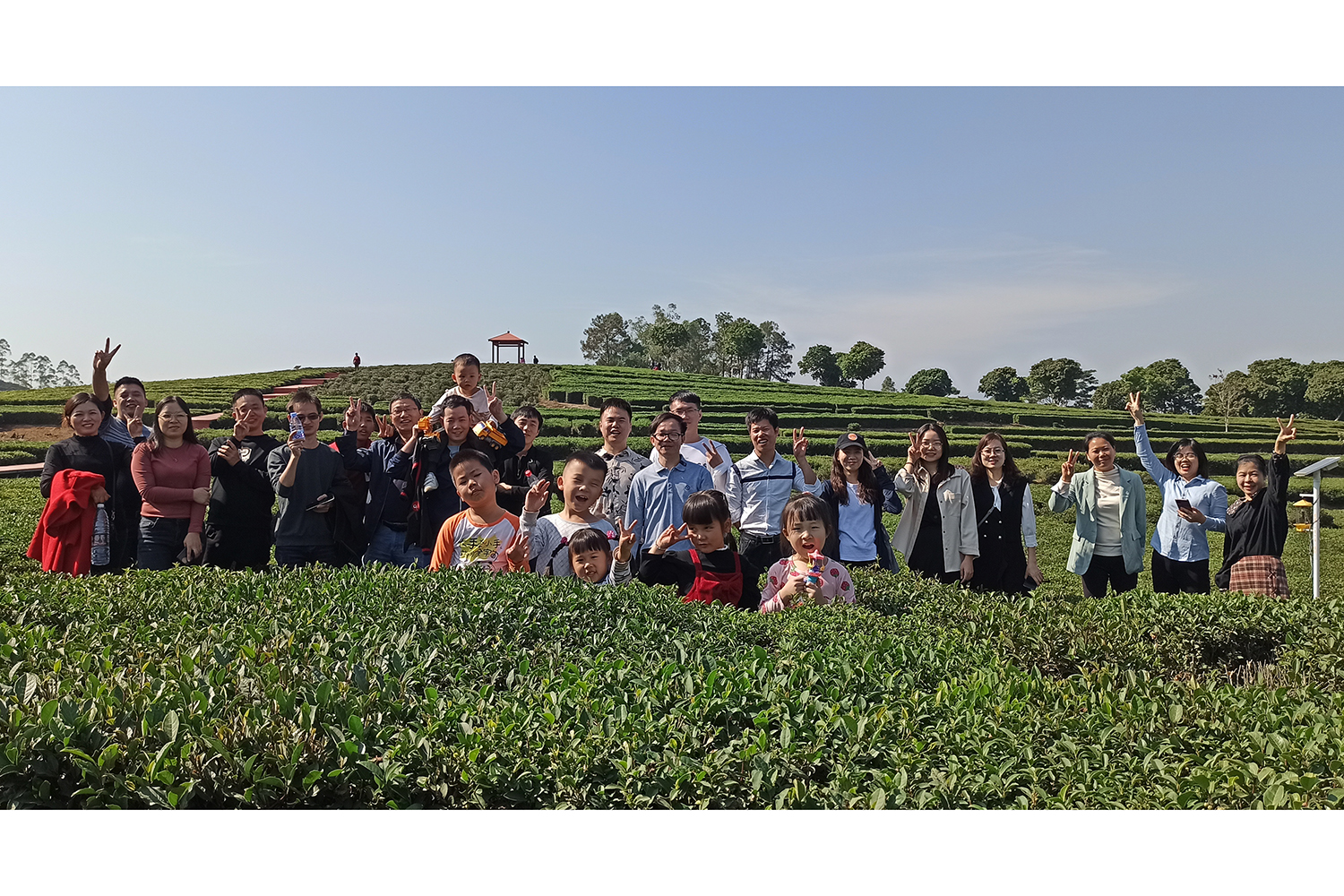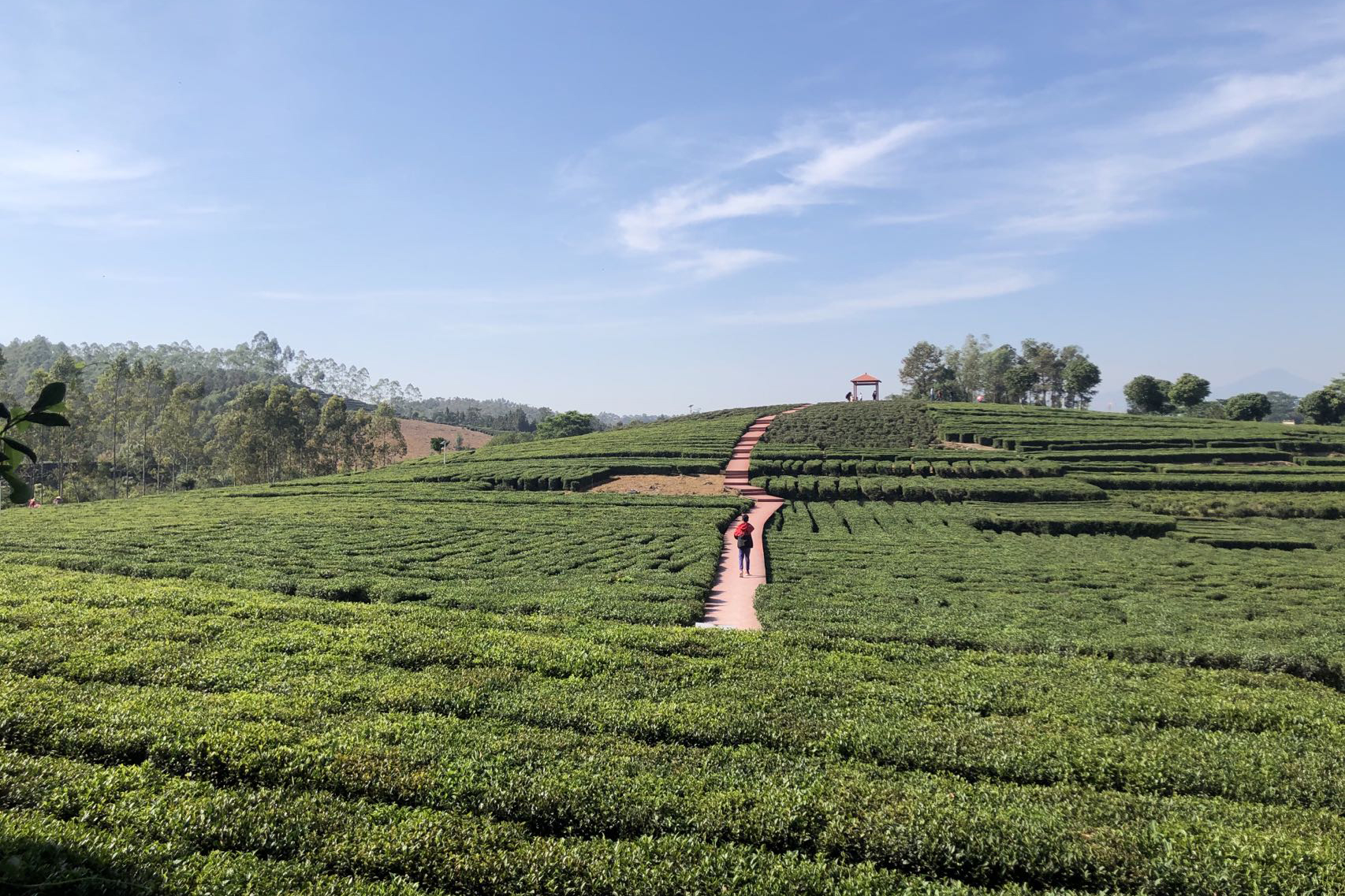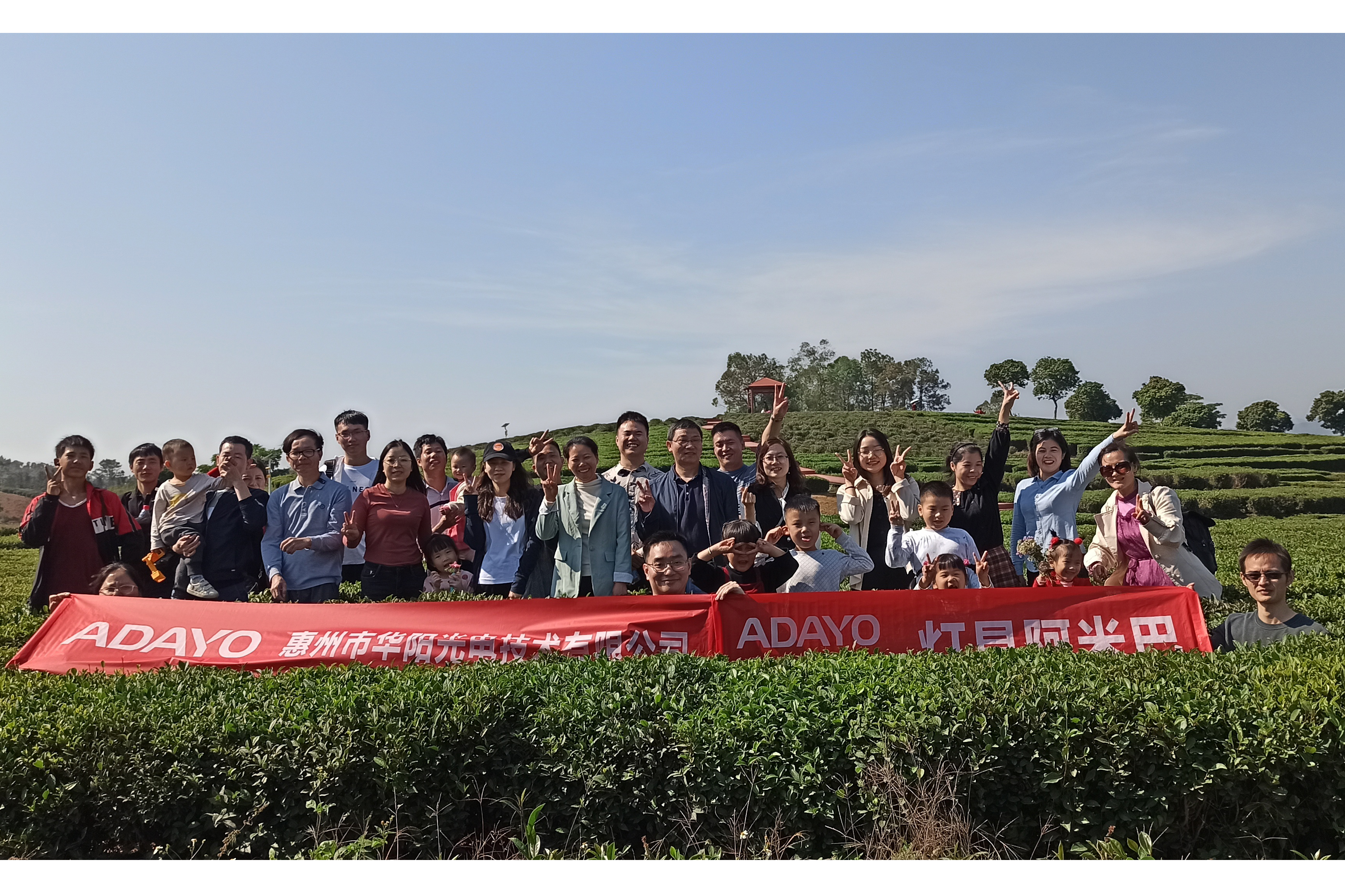We usually think that the tea can only been picked in spring, how can you pick tea in winter? In fact, the tea can be picked in any season as different area. For example, in Guangdong, when the sun is shining, winter tea is waiting for you to pick it in the tea garden.

On 28th November, ADAYO Lighting marketing team went to the famous tea township-Ba Tong Town of Boluo, we go to have an encounter with winter tea.
In this team activity, ADAYO Lighting colleagues from the Marketing Department and the R&D Department all set off on their own, and brought their families with them. After the busy work, they came to the vast tea garden, bathed in the sunshine and immersed in the fragrance of tea, which not only enhanced the communication between colleagues, but also increased the parent-child relationship. Endless tea gardens, a rolling tea mountain, wisps of tea fragrance, silk warm sun, we seem to be in a paradise, linger to forget.


History of tea in Ba Tong Mountain, Huizhou
Ba Tong town is located in the eastern foothills of Luofu Mountain, the history of tea cultivation in Boluo can be traced back to more than 1700 years, Li ao as the governor of Zunzhou in the fourth year of the Tang Yuanhe (809) he recorded in the article "solve the confusion" Wang Ye Ren reclusive living in Luofu, "accumulation of ten years, and the construction of grass halls, planted tea into the garden, ploughing 30 mu of fields for food." It can be seen that Luofu Mountain already had a sizeable tea garden in the Tang Dynasty. The tea from Luofu Mountain started in Jin, flourished in Tang, flourished in Song and smells good today.

Scientific knowledge
What is winter tea: Winter tea is also called "winter flakes" and can also be called "snow flakes". Although it is called winter tea, it is not made in winter, but it is customary to call the last harvest of the year winter tea. The tea picked after the frost (or late October) can generally be called winter tea. When the weather gets colder, the tea may no longer be picked. Another point is that in some high mountain tea areas like Taiwan, where the temperature is much lower than in the flatlands, winter tea may be picked earlier.
What are the characteristics of winter tea? Four words describe it: "high aroma and sweet water". The aroma of winter tea is delicate and persistent, and the taste is rich and smooth.
The difference between winter and spring teas
Lowest production of winter tea, highest production of spring tea
Spring tea: Because the climate is suitable for the growth of plants, the production is the largest, and there is a tendency to be a shortage of workers when picking tea, so spring tea often has a "young harvest", which tastes stronger, but has a slightly bitter taste of unripe young leaves.
Winter tea: The production is the lowest, and tea growers usually wait until the leaves are ripe before harvesting, which is why winter tea has a delicate aroma and low bitterness.

Tea growing environment
Winter Tea: The lower the temperature, the slower the tea leaves grow, the finer the structure of the matured leaves and the better the flavour. Because of this, winter tea leaves have a throat like alpine tea, making it a higher grade, must-have tea for connoisseurs.
Spring Tea: The flavour of "early spring tea" is not as good as that of "regular spring tea" produced after the temperature has warmed up. As the weather is cold when the tea buds are sprouting, the soil microorganisms are low and are unable to fully absorb the nutrients, so the tea leaves rely on their own internal nutrient reserves for growth.

Appearance
From the dry tea leaves: spring tea has thicker leaf stalks, thicker leaves and a bright green colour; winter tea is lighter in colour, with slightly more yellow flakes and a more uneven colour.
From the perspective of the tea leaves after brewing: spring tea is faster to sink when brewed, the aroma is rich, the colour of the tea broth is clear and bright, the buds and leaves are more numerous and the veins are finer; winter tea has a light aroma, the flavour is soft and smooth, the colour of the tea broth is elegant and the buds and leaves are more obvious at the edges.
Less frequent re-brewing of winter tea
Spring tea: the hollow branches between the leaves are longer and contain more water, making it more resistant to brewing.
Winter tea: the hollow branches between the leaves are shorter and contain less water, so each pot can be brewed 3~4 times, after which the tea will not show its flavour and only the throat flavor remains.
Drinking spring tea, drinking tea soup; drinking winter tea, drinking tea fragrance.
Spring tea: the aroma is light and sweet in the mouth, and the sweetness can still be tasted after a long steeping, so "drink tea soup".
Winter tea: Deeply rooted, with a deep, sweet throat and a mild aroma, unlike spring tea which is rich and fragrant, and is known for its smoothness, so "drinking winter tea" actually means drinking tea down the throat with a lingering flavour.
On the whole, in terms of the grade of tea, spring tea is the best for producing good tea, but in terms of flavour, it depends on one's taste preference, spring tea is fresh and lively, while winter tea is elegant and profound.

Website: https://www.adayoled.com
HUIZHOU FORYOU OPTOELECTRONICS TECHNOLOGY CO., LTD
Add: Foryou Industrial Park Area B -- Plant NO.6 No.1North Shangxia Road,Dongjiang High-tech Industry Park, Huizhou City,Guangdong Province
Tel: 0086-752-5300601
Fax: 0086-752-5300099
Email: [email protected]
































